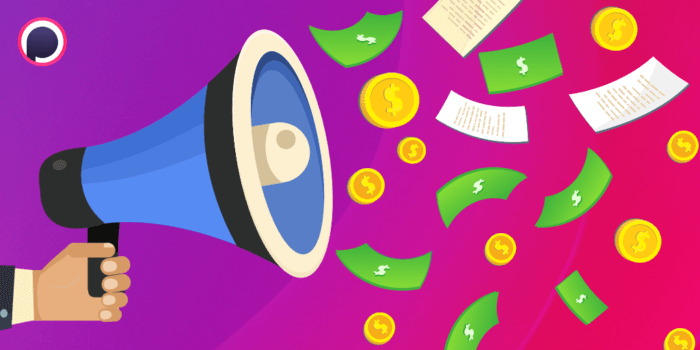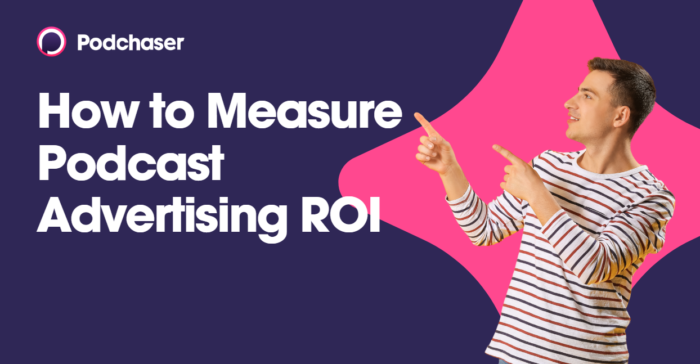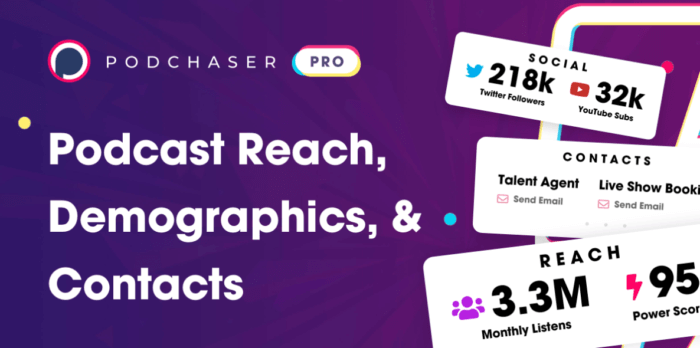How to Measure Podcast Advertising ROI
It’s a common misconception that you can’t measure podcast advertising ROI. This was more true 10 years ago, but since then technology and techniques have been developed to help advertisers get the most of the podcasts.
In this article, we’ll share podcast advertising measurements for reach, impressions, web traffic, conversions, and brand engagement, but first we must establish that podcast advertising is cost effective.
Table of Contents:
- Podcast Advertising is Effective
- Podcast Ads are Cost Effective
- How to Measure Podcast Advertising ROI
Podcast Advertising is Effective

Last year, podcast advertisers spent a total of $1.33 billion, with that number expected to grow to $1.74 billion by the end of this year. If companies are spending more money each year on podcast advertisements, you know they’ve found something that works. But if you’re still not convinced, let’s dig deeper into the statistics.
Podcast listeners are ideal recipients for advertising for a number of reasons. First, there are a lot of them; every month an average of 104 million Americans listen to podcasts, up from 67 million in 2017. That’s one third of the country! Roughly the same number of Americans who watch football every week.
In addition, 45% of podcast listeners make at least $75,000 per year, meaning that podcast listeners tend to have a high discretionary income. Which they love to use on podcast advertisements, with more than half of listeners reporting that they’ve made a purchase from a podcast advertiser.
Podcast Ads are Cost Effective
And to top it all off, podcast ads are really cheap, especially compared to syndicated radio or television. We’ve written a whole article diving deep into podcast ad rates, but the short version is that they cost $10-30 per one thousand listeners. A similar 30-second radio ad can cost hundreds of dollars, depending on the market.
How to Measure Podcast Advertising ROI

Because the benefits of podcast advertising are myriad, so are the ways of measuring it. Podcast ads increase brand awareness, engagement, and sales, so you’ll need different metrics for each.
1) Reach and Impressions
Before advertising on a podcast, you likely already discussed the show’s audience reach with the host, but don’t stop there. After your advertisement has aired on an episode, you should ask for the episode’s download numbers and demographic data. Hosts will likely share this basic information if they want to work with you again in the future. Detailed reach data helps you compare the effectiveness of your campaigns, allowing you to better target your media buys in the future.
However slight, there is a chance that podcasters will juice their download numbers slightly to be more attractive to advertisers, so it helps to independently verify the numbers they gave you with Podchaser Pro. Using Podchaser Pro, you can go to that podcast’s Insights page to quickly view their estimated reach per episode and per month.
2) Website Traffic
If your website traffic increases after a podcast advertising campaign, that’s a sign that your campaign was successful. But how do you know which campaign drove traffic when you have many campaigns occurring at the same time? And how do you know that the spike in brand engagement can be attributed to podcasting, and not your campaigns in other media?
The traditional method for advertisers is pixel tracking. It allowed advertisers to track user’s after they were served an advertisement. If the user eventually went to the advertisers website, that traffic could be attributed directly to the advertisement. I used the past tense “allowed” because this method is now against the privacy policy of many large companies like Facebook and Apple.
Podcasts allow you to effectively pixel track without the same banned techniques. How it works: whenever a podcast is downloaded, a podcast hosting company provides the listener’s basic user data (IP address and User Agent) to a third party analytics platform like Podsights. That analytics platform then partners with various podcast advertisers and places pixels on their websites. This pixel also captures basic user data. By capturing user data in these two places, the analytics platform can know that someone downloaded a podcast with a brand’s advertisement and that that person eventually visited that brand’s site. These two points of data capture, as well as a slew of other attribution signals, allow brands to understand if their podcast ads are driving website traffic.
3) Sales Conversions
To measure sales conversions from your podcast advertising, you can employ two of the most tried and true conversion measurement techniques: vanity URLs and promo codes.
A vanity URL is a unique link you create and provide to the podcast you are advertising on. They share that link on their episodes, and then you can be sure that any traffic to that vanity URL is from that specific show. One downside of vanity URLs is that they can be a little difficult for customers to remember, because they need to remember the website and the vanity page.
A simpler variation on the vanity URL is the promo code. The podcaster shares the code during their ad reads (often with an associated discount), and now customers only have to remember the one word code to redeem the offer.
Vanity URLs and promo codes are the most direct way to measure podcast advertising ROI. While the other methods we’re discussing are important aspects of advertising, the return on investment comes from more nebulous benefits like brand awareness and brand engagement. On the other hand, vanity URLs and promo codes prove that your advertisements are making cold hard cash – one success metric that nobody can argue with.
4) Brand Engagement
Having people aware of your brand is one thing, actually having people talk about you is another. Social media is the traditional method of measuring brand engagement, but social media only captures one segment of the public sphere.
To round out your brand engagement measurement, you need to capture word-of-mouth. You can’t hear what everyone is saying about your brand on the street, but you can do the next best thing with podcasts, thanks to Podchaser Alerts.
To measure word-of-mouth for your brand, simply visit the Podchaser Alerts page and type your brand’s name and automatically receive email alerts when podcasts are mentioning you. You could even create Alerts for your competitors to compare their brand engagement with yours.
More Tools for Podcast Advertisers – Podchaser Pro

Earlier, we mentioned using Podchaser Pro to estimate a podcast’s reach, but that’s just the beginning of what advertisers can do with Pro.
Podchaser is the world’s most comprehensive podcast database, and Podchaser Pro unlocks access to truly one-of-a-kind podcast data. With Pro, you’re just a few clicks away from knowing almost every podcast’s contact information, sponsor history, reach, Power Score™(cross-platform popularity), demographics, and more.
Request a free demo to see why Forbes called Podchaser Pro, “an incredibly useful tool for podcast marketing or booking guests or promoting to media or for research and development.”
Free Podcast Advertising eBook Download

Unlock more with Podchaser Pro
- Audience Insights
- Contact Information
- Demographics
- Charts
- Sponsor History
- and More!

- Account
- Register
- Log In
- Find Friends
- Resources
- Help Center
- Blog
- API
Podchaser is the ultimate destination for podcast data, search, and discovery. Learn More
- © 2024 Podchaser, Inc.
- Privacy Policy
- Terms of Service
- Contact Us